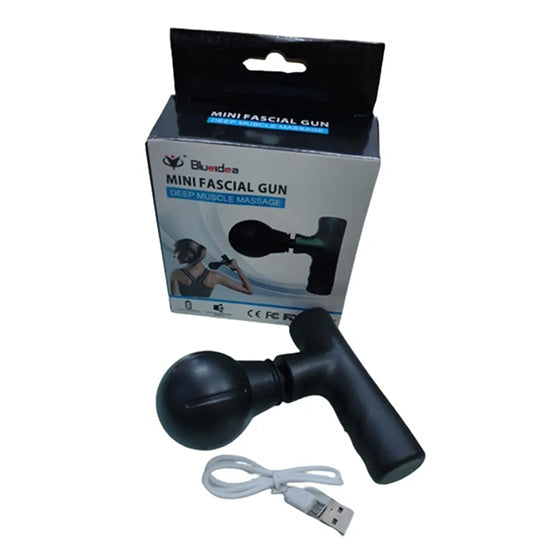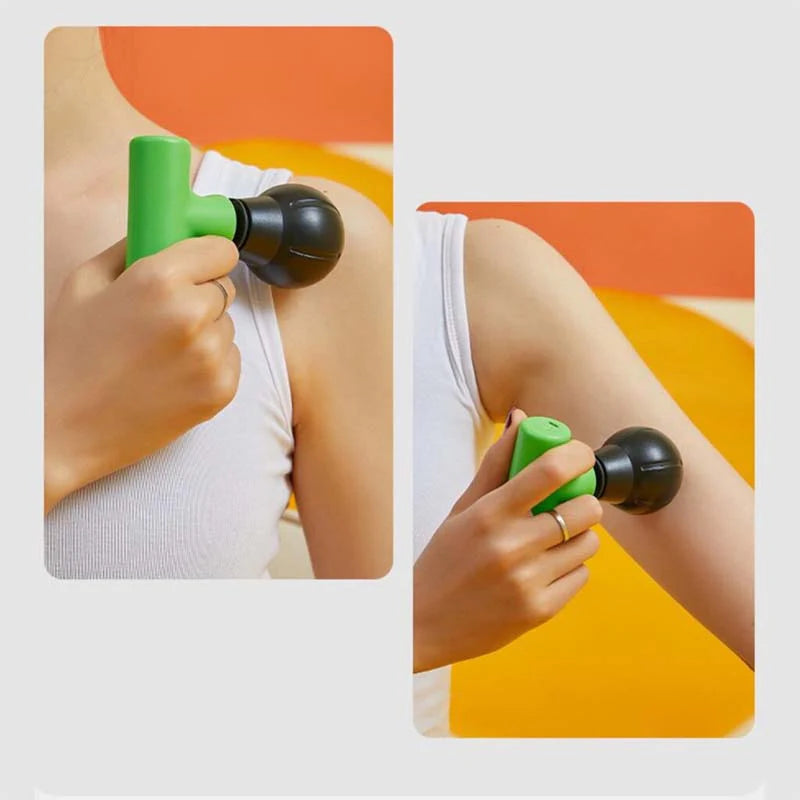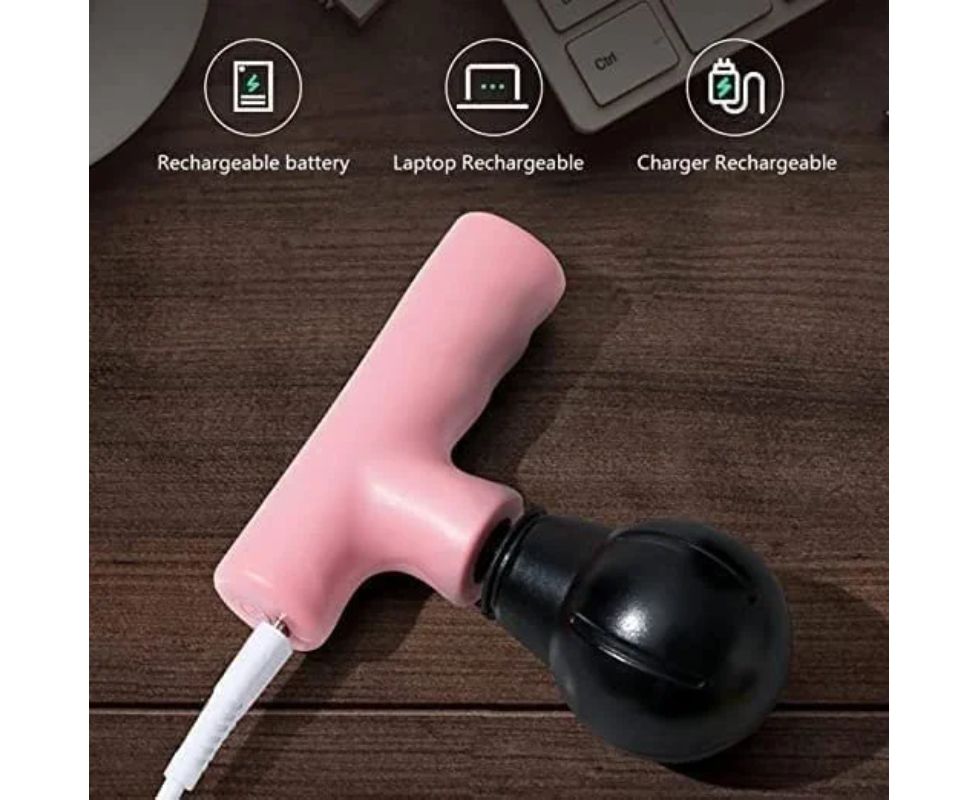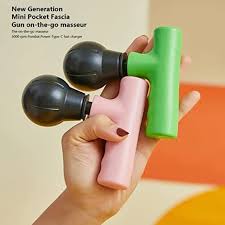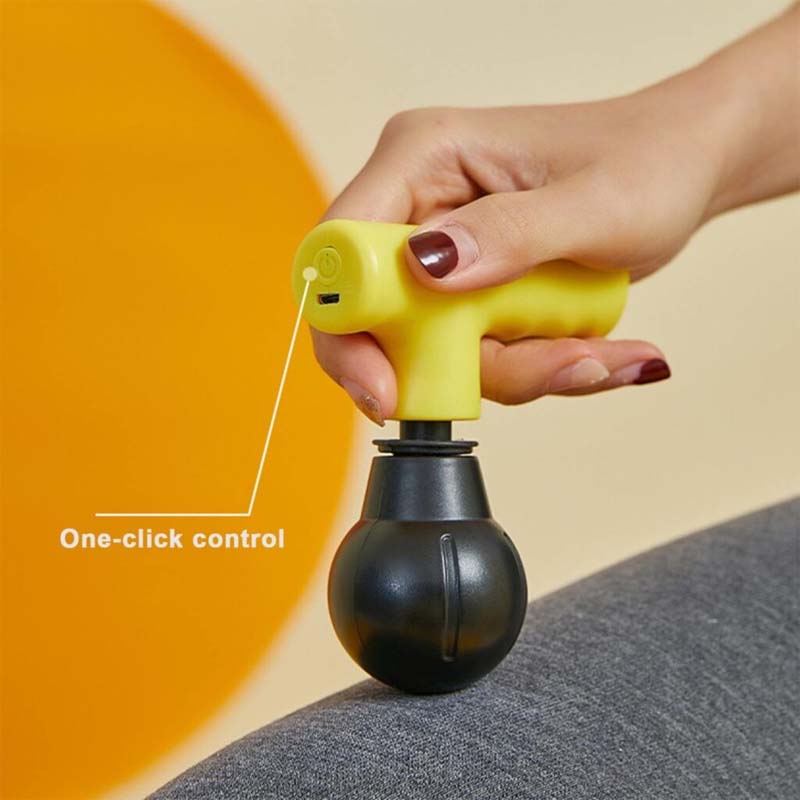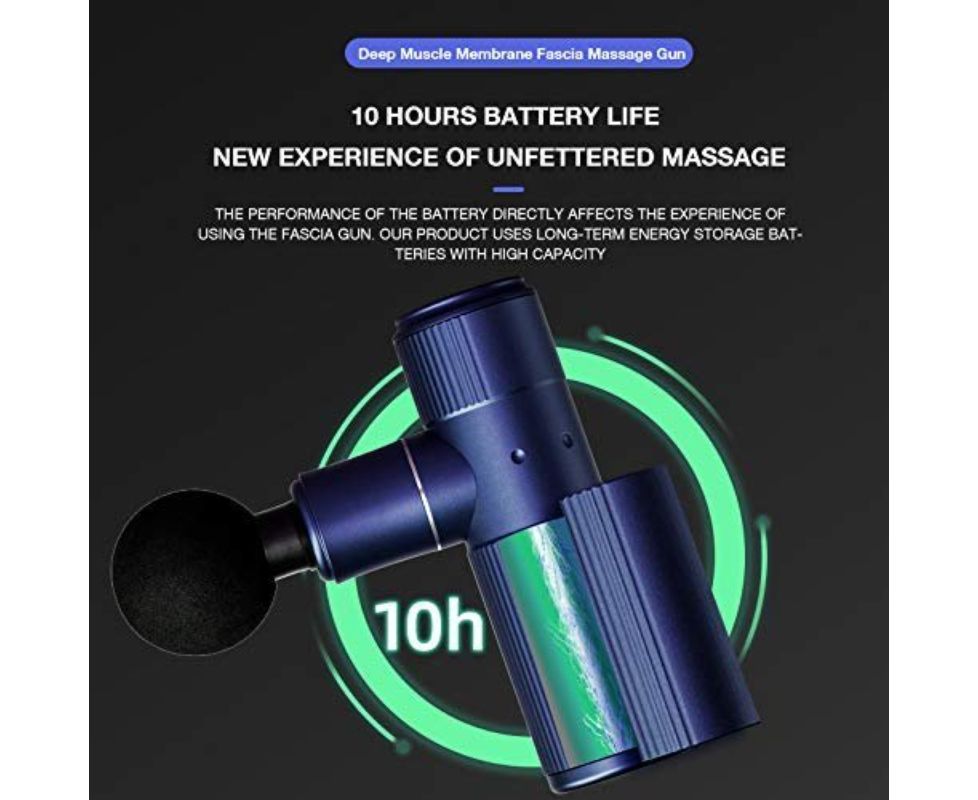THE FITNESS STORE
mini massages gun
mini massages gun
Couldn't load pickup availability
Try a Massage Gun for Relieving Aches and Pains
These percussive devices can help relax muscles when seeing a masseuse isn’t an option
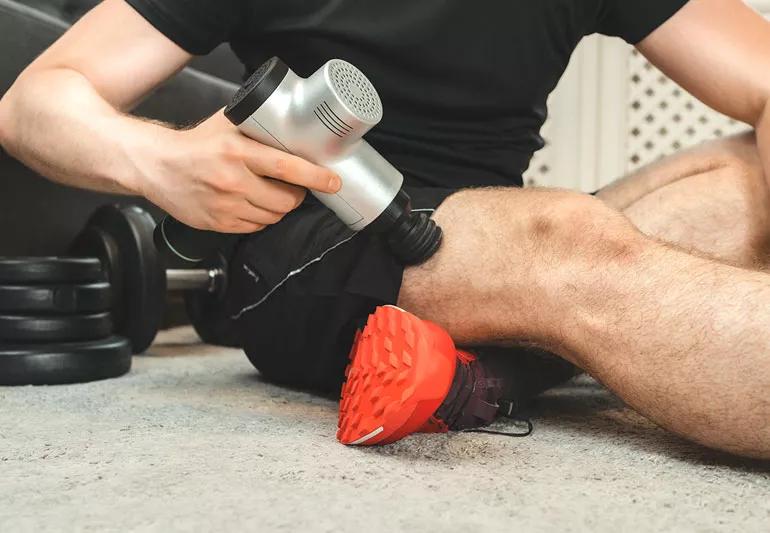
Feeling stressed out and tight? A massage therapist can help work out those stress-induced kinks. But what if you don’t have the budget or time to see one?
With an ever-increasing array of massage guns on the market, you might find that relief fits in the palm of your hand. Physical therapist Gary Calabrese, DPT, offers tips for how to effectively use a personal massager for benefits that go beyond stress relief.
What is percussive therapy?
A percussive massage gun uses vibrations to warm your muscle tissue and increase blood flow to target areas. You apply it to sore spots, and — boom, boom, boom! — its rapid-strike action gets to work.
“Think of it like a mini hammer, repeatedly impacting the soft tissue and causing blood flow to increase in that area,” Dr. Calabrese says. “The gentle pressure can decrease any tight muscle tissue or soften scar-like tissue, called adhesions. This helps to elongate the muscle fibers.”
Stretching and massage therapy can do this, too — but with a massage gun, you can do it on your own, from the comfort of your couch. And you don’t have to be sore or tense to use one.
“They can also be good for warming up your muscles before you start an activity or helping with cool-down afterward,” Dr. Calabrese adds.
Does percussive therapy work?
Yep! To recap, massage guns can:
- Increase blood flow.
- Relieve muscle tightness.
- Provide stress relief.
- Improve post-exercise soreness.
“When used properly, portable massage guns are generally safe and effective at delivering a literal quick hit of relief to the regions of your body where you carry stress, like your neck, shoulders and lower back,” Dr. Calabrese says.
“If you have underlying medical conditions, concerns or are actively recovering from an injury it is always best to consult your healthcare team.”
Sounds great, right? Unfortunately, the tools themselves can be pricey — but when you add up the potential cost of regular visits to a massage therapist, it may be a worthwhile expense.
What massage guns can’t do
“People often ask me if a handheld massager will improve their athletic performance,” says Dr. Calabrese. “The research is clear that these devices have not been proven to improve speed, power or endurance. They may, however, improve your range of motion (ROM) and perception of fatigue which may ultimately benefit you.”
Limited research suggests one benefit that may be a positive for short-term performance: “Massagers could aid competitors who need to lift a weight or hit a goal just one time,” Dr. Calabrese clarifies. “They may increase performance in those instances because they prepare the muscle you’re using for that singular event.”
How to use a massage gun
Ready to get gunned? Dr. Calabrese walks you through the basics of using a massage gun on yourself or someone else.
- Choose your desired intensity. Most massage guns have more than one setting, offering you control over the level of pressure you want to deliver to your muscles. If you’re new to this, it’s best to start with the lowest intensity to see how your body reacts. You can increase intensity in the future, if you like.
- Target your muscle. Decide where you want to use the massage gun and point its head atop that muscle. “You don’t want to push down or add pressure,” Calabrese advises. “The massage gun provides pressure for you.”
- Go slowly. You can’t rush a good thing. Slowwwly move the massage gun along your muscle, again taking care not to add any extra pressure (which can actually cause damage rather than provide relief).
- Give extra love to sore spots. If you encounter a spot that feels particularly tight or sore, hold the massage gun there for a few extra seconds to provide an extra dose of attention.
- Limit your use. Even if things are feeling great, don’t use the massage gun for longer than a couple minutes on any one muscle group.
Be sure to stick to muscles, not bones. If you drag the massage gun over a bony spot, like the nape of your neck, you’ll feel some kickback — and probably a little bit of pain. To avoid injury, it’s best to skip these areas.
How to use a massage gun for warm-up and cool-down
Your massager may give leg day a little bit of a leg up. Before a heavy workout, target it on a single group of muscles, like your calves or thighs, to help ready them for activity. “By prepping the tissue, you’re less likely to cause damage during your workout,” Dr. Calabrese says.
If you’re doing a whole-body workout, a whole-body warm-up (like jumping jacks) may be a better fit. “But if you’re heading into a workout that targets certain muscle groups, targeting those muscles ahead of time with your massage gun may be more efficient,” he adds.
You can also turn to the massage gun for a bit of extra recovery. The reason you “hurt so good” after a workout is that exercise creates a buildup of lactic acid, which leads to muscle pain. Using a handheld massager after activity can reduce or delay muscle soreness by decreasing your muscle fibers’ ability to hold onto that lactic acid.
What to look for in a handheld massager
Commercially available massage guns come in an array of sizes, shapes and price points. Whether you need to target one muscle or a group of muscles, there’s a right-sized massager for you.
These four features can help you choose the massager that’ll make you say “aaahhhh”:
- Speed: Having multiple speeds makes a massager more versatile.
- Weight: You have to be able to hold the massager in one hand for up to 10 minutes while you work on a muscle or muscle group, so look for one in the 2- to 4-pound range.
- Noise: Some models are quiet, while others can be fairly noisy. If the sound detracts from its purpose (like if you’re hoping for a relaxing experience), consider a massage gun with a brushless motor.
- Battery: Some massagers can run for hours on a single charge while others need to be recharged within about 90 minutes. Massage guns with replaceable rechargeable batteries tend to be more expensive, but they may save you money over time.
If you just can’t shake that soreness, there’s nothing quite like getting a professional massage. But a massage gun may be the perfect investment for relieving those aches and pains — and the stress that comes with them — between visits.
Share
